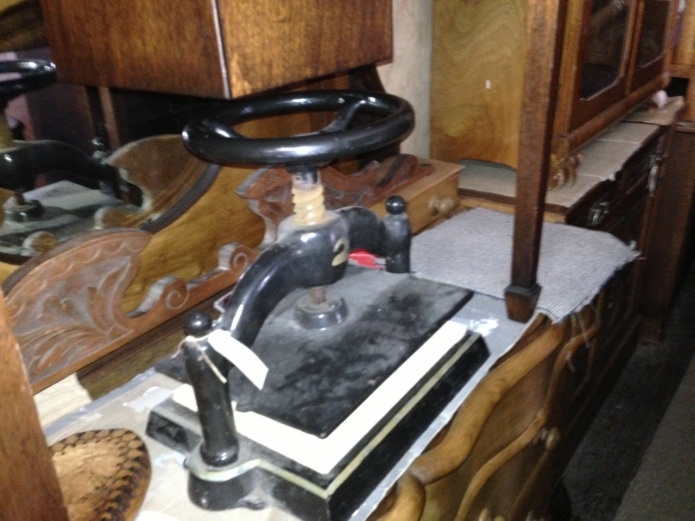
OMG My 2nd Tutorial
OK so this is my second tutorial, and it comes straight after my last post which was also a tutorial. Freaky. I like sharing my knowledge, so expect to see more. And, please comment and help me improve in any way—if it needs it. I love getting comments anyway so comment away!
Pamphlet Stitching is Easy
As you may know, this stitch is intended for thin, single-section pamphlets, and can be used in a few simple binding structures. I have used it in the past for other things as well, like birthday cards for my wife and our wedding invitations, both of which consisted of a heavy (200gsm+) cover and a lighter sheet of paper as the single section. It is very easy to learn and adapt to your own needs.
All Pamphlet Stitched Up

Above is an illustration I created to enable the visual among us (like me) to see what to do instead of interpreting a confusing list of in-this-hole, out-that-hole instructions. I started to type out a list of instructions, but it started to get long-winded and probably not very easy to follow. However, if you want me to I’ll include them.
On thing I didn’t include in the diagram is the final knot. You should use a reef or square knot. My colleague gave me this little ditty to remember how to tie it: right over left and under, left over right and under. Right and left in this case refer to the right an left ends of the twine or thread. Make sure that you start the knot with the thread ends on either side of the long stitch so that the knot ends up holding onto it.
To do a 3-hole stitch, simply cut out the last loop to the left and right in the above diagram; to do more holes, just add more in-and-out loops. It is possible to sew an even number of holes—you’ll just end up with an uneven number of stitches either side of the knot. In either case, don’t try starting sewing at the last hole.
What You Need for a Very Simple Book or Card
You will need the following tools and materials:
- Text paper—1 if you’re making a card, more if you are making a book.
- Cover-weight card. For the cover. About 200–300gsm is good.
- Thread, twine, or string—about 3 or 4 times the length of your spine.
- Bookbinding needle (you don’t even have to use a needle, just make the holes bigger each time you pass thread through).
- Bodkin or Awl, or something else spiky. The sharper the better.
- Scissors or knife.
You do not have to have shiny new expensive bookbinding tools—use whatever you have that will get the job done. In the past, I have used bamboo skewers to pierce the holes for little pamphlets, and some plasticky type of string instead of linen thread or whatever. Also, you do not have to be too exact with your sewing-hole placement—random can be quite cool.
With the paper and cover stock, make sure that your grain is in the right direction. I mostly cut A4 in half parallel to the short edge to give me 2 A5 sheets, which I fold in half again to give me an A6 notebook. Because A4 office paper is usually long-grain, this means that I end up with short-grain A5 sheets which are perfect in the grain direction department.
Steps to Success
-
Gather your tools and materials

-
Fold your text pages and cover in half

-
Pierce your holes (freehand it or measure-and-mark it)


-
Sew the pages together using the instructions above


-
Et Voila! You now have a little notebook, created in four (4) steps.
The End
I hope you liked this little tutorial. It actually turned out to be a two-in-one: how to do a pamphlet stitch, and one idea about using it.
I’m trying to keep the posts up, in an effort to keep my readers interested. More to come soon, including a proper look at what I gave a sneak peek of a little while ago. I am also planning a bookbinding phrasebook section of my website. Stay tuned.


















